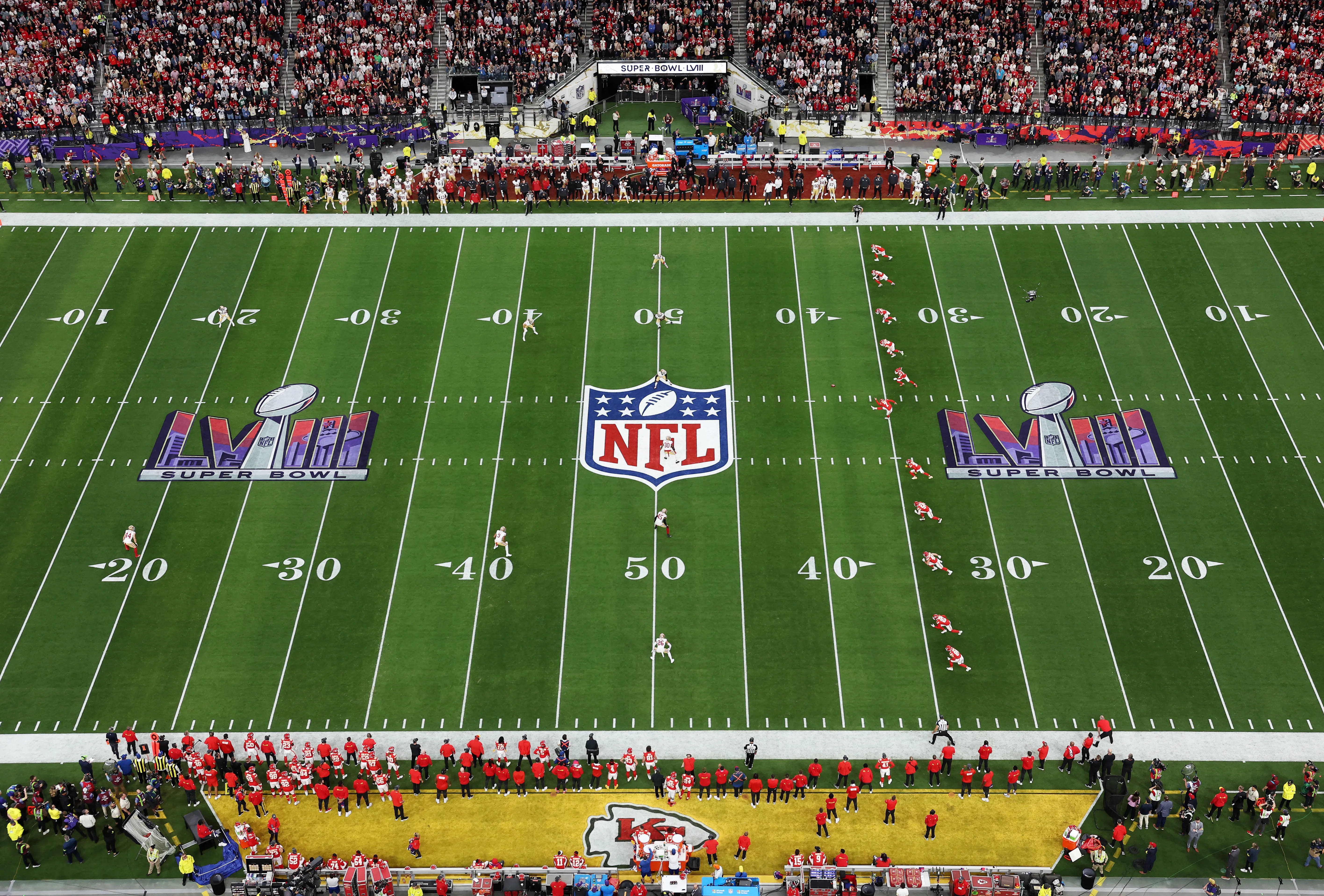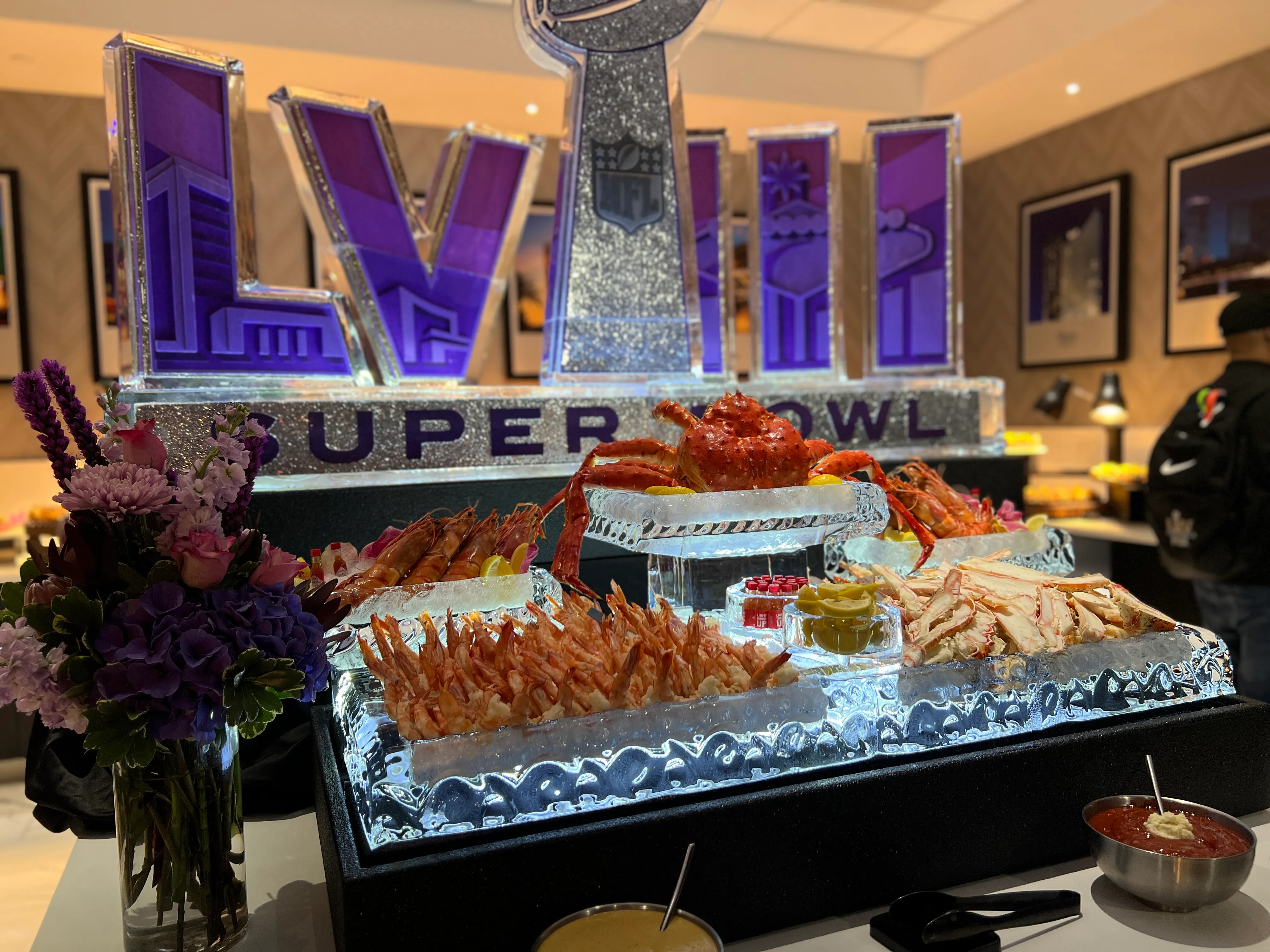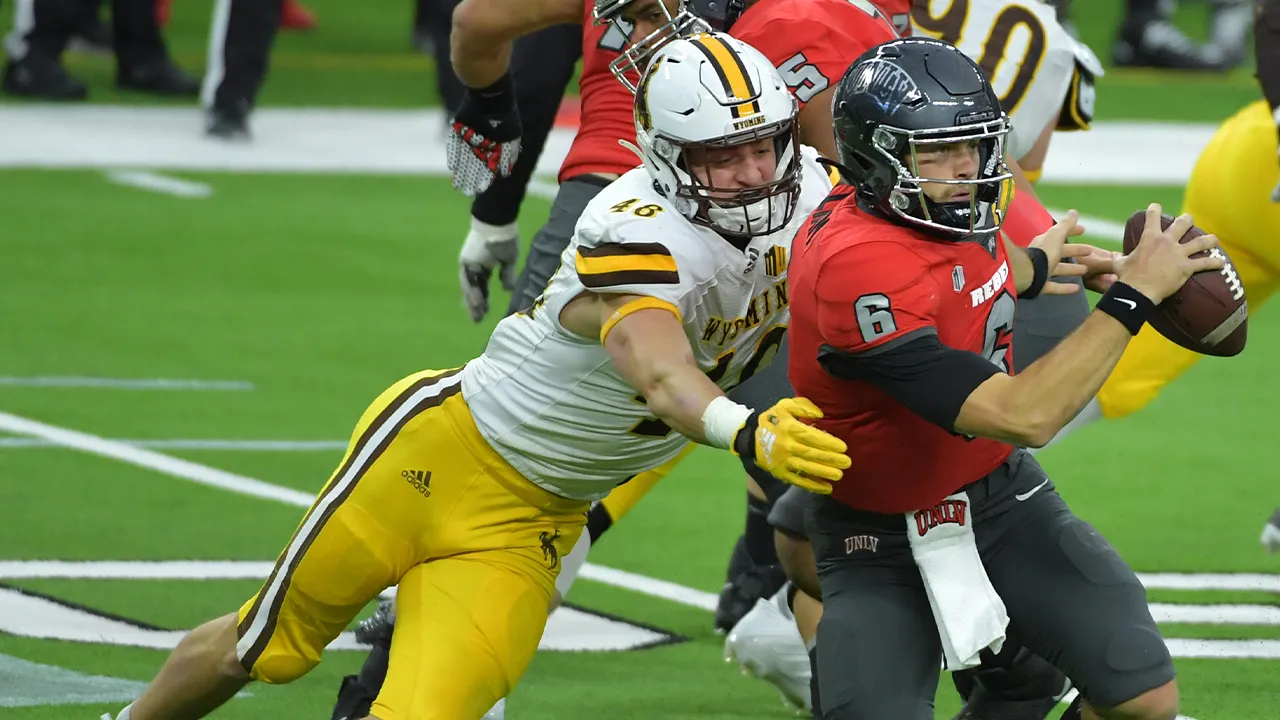After months of watching tape and getting insight from valued sources, Adam Hoge has put together his top 10 quarterbacks in what he believes is an outstanding quarterback class. Here is how he views the top quarterbacks in the 2021 NFL Draft.
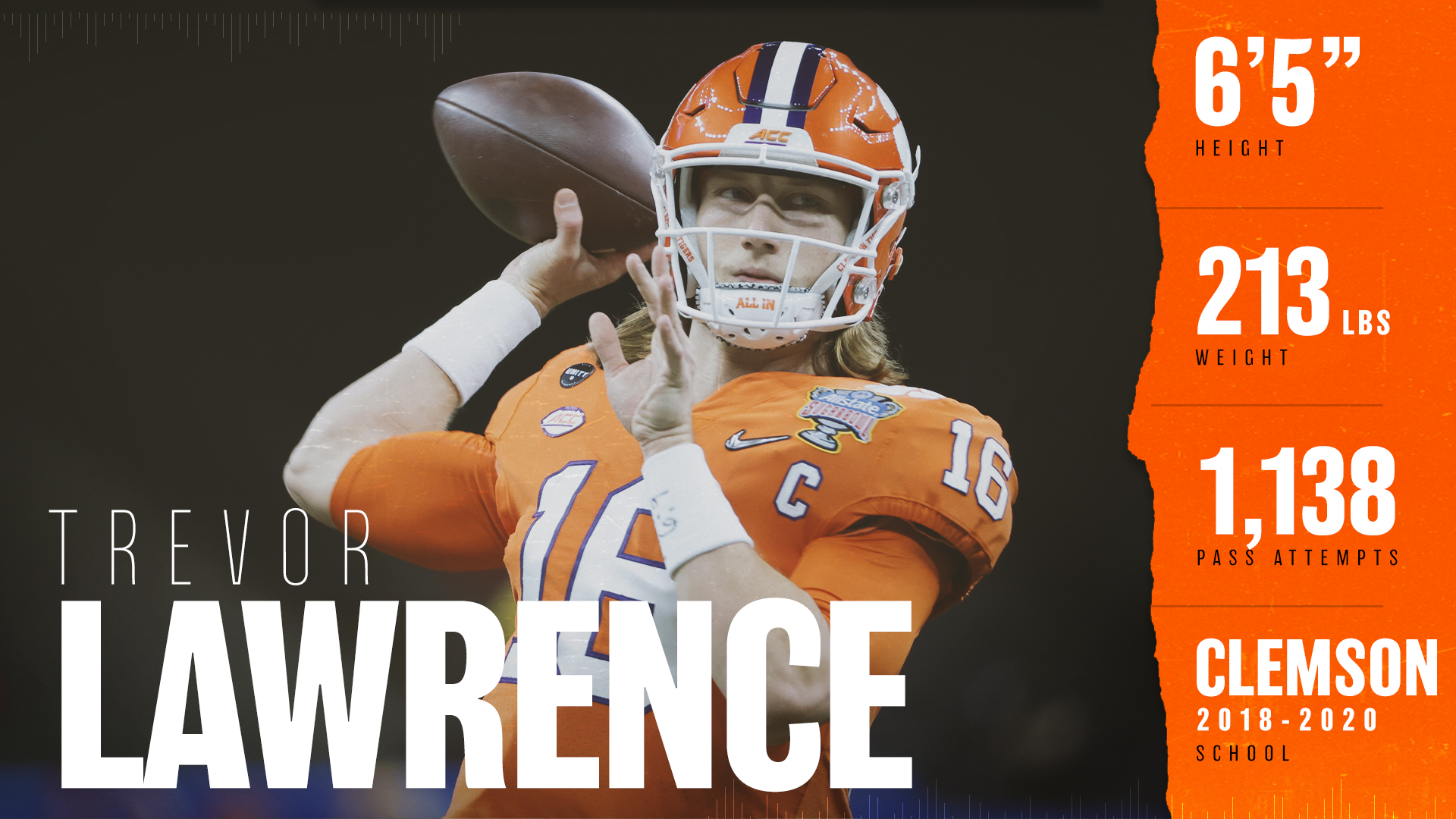
Trevor Lawrence would have been my No. 1 quarterback last year and that doesn’t change in 2021, even in a loaded quarterback class. He can make every NFL throw with ease, showing effortless throws to the field. He has a rare size/speed/athleticism combination for the quarterback position and his footwork is exceptionable. He has experience with pre-snap protection calls and he processes well, throwing with anticipation.
Lawrence isn’t the perfect prospect and he’s not even the most accurate quarterback in this class. There are scattered duds on his film and his mechanics can waver. There are more missed opportunities on his film that you’d think. That said, Lawrence always bounces back strong with a next-play mentality you need at the quarterback position. And he’s a winner, owning an 86-4 record since the start of high school. He’s a tough, hard-worker and his teammates love and respect him.
Where I would draft him: No. 1 overall. There’s no reason to overthink this one. Lawrence is a franchise quarterback to build around. A longer Andrew Luck-like career is likely.
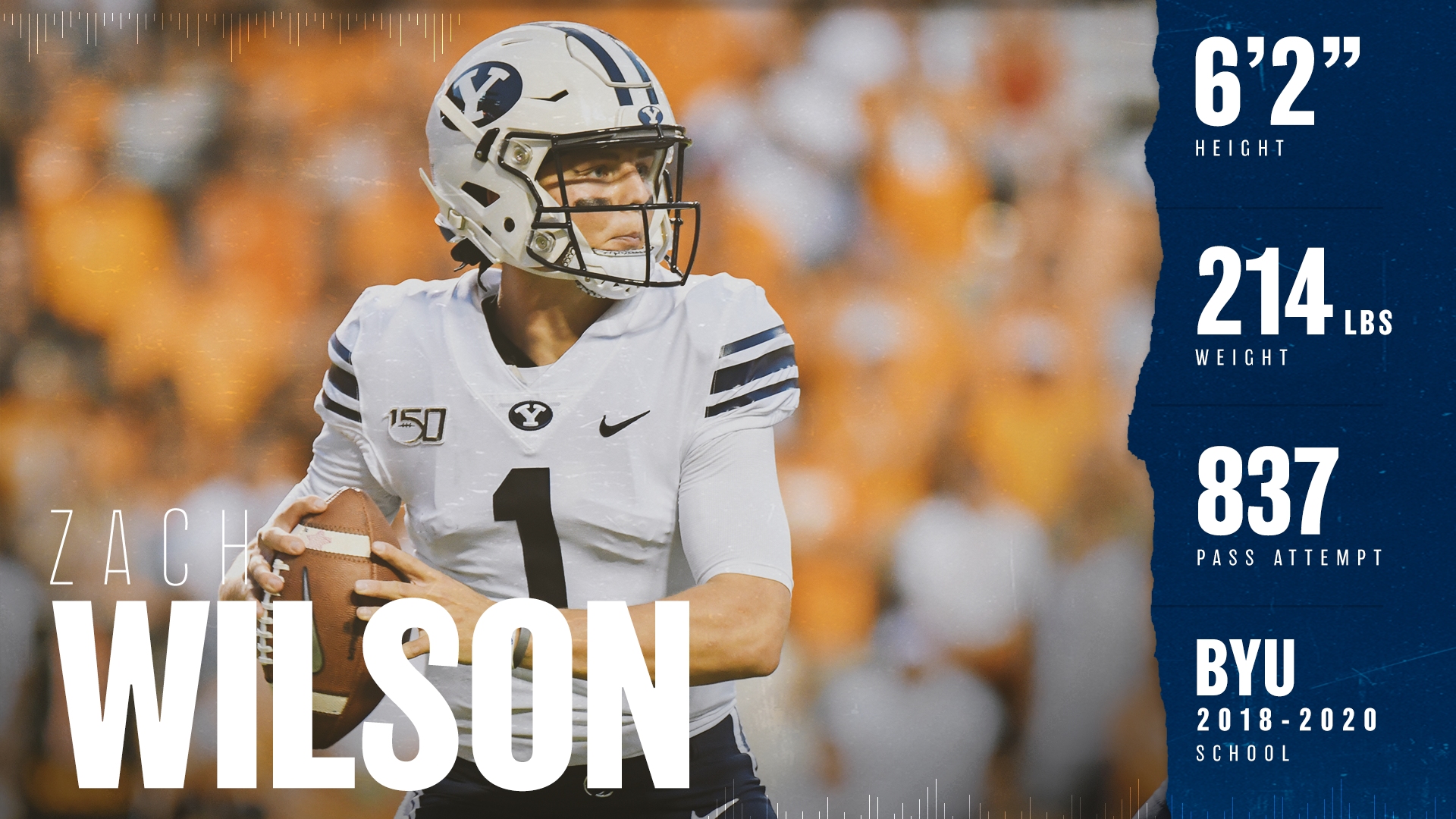
Believe it or not, Wilson could have a higher upside than Lawrence, but there’s more risk involved. Wilson is unmatched in this class when it comes to playmaking ability when structure breaks down. He can make any throw from various arm angles, especially when off-platform. He’s a quick decision-maker/processor with low turnover numbers and his ball placement is usually on-point. The BYU offense was diverse, and Wilson showed he could handle a variety of concepts.
On the downside, Wilson has a smaller frame and barely meets the 6-2 threshold for quarterbacks. He plays frenetically and his natural athletic ability tends to cover up inconsistent mechanics and read decisions. The ball tends to dip when he throws to the field, even though he’s loaded with arm strength.
Where I would draft him: No. 2 overall. Wilson is a Week 1 starter who can become an elite NFL quarterback if he handles the jump in competition and improves his pre-snap reads. I’m a little worried about him going to the Jets, but he’s talented enough to survive a less-than-ideal situation.
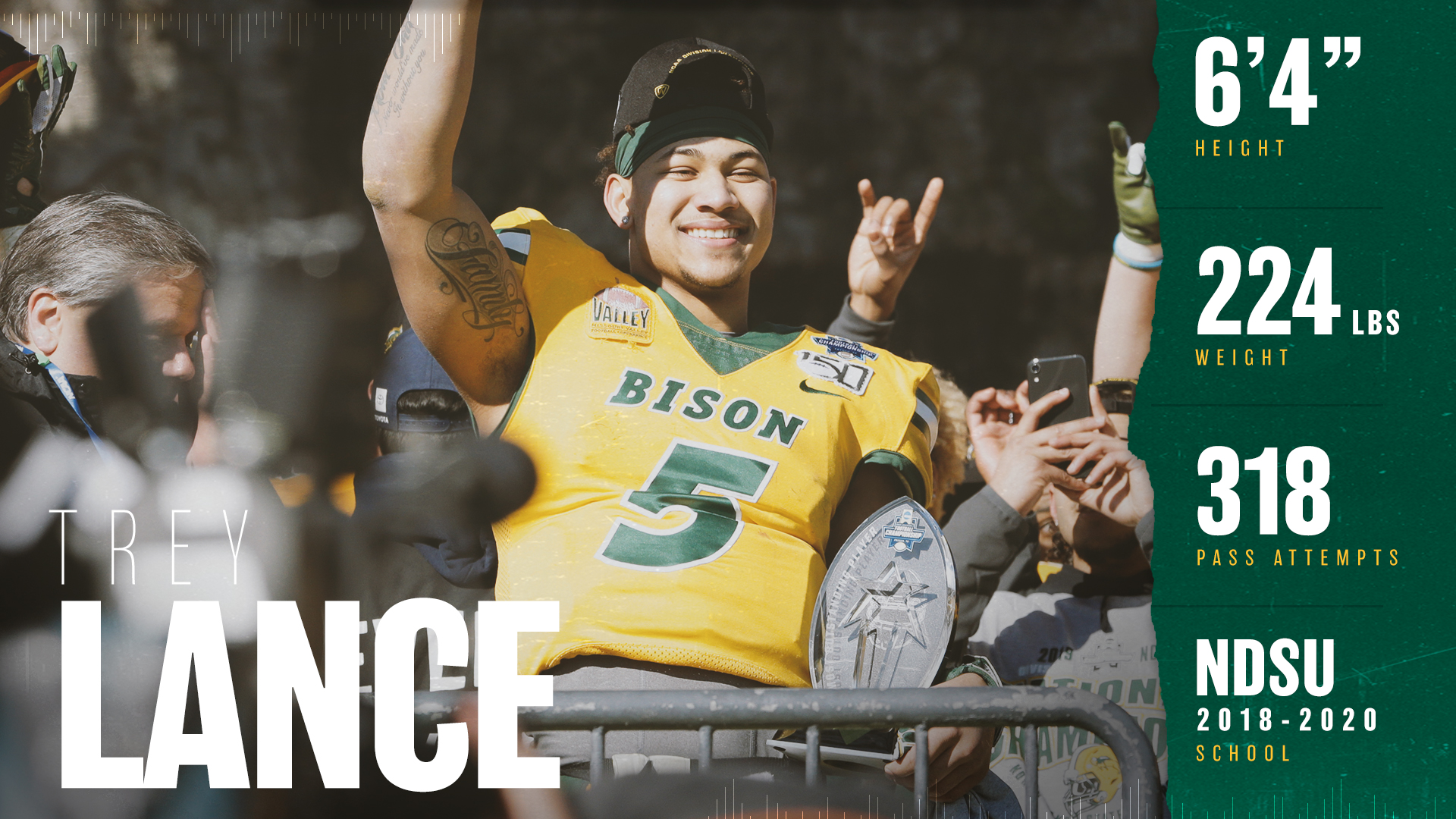
Perhaps the toughest evaluation in this class, Lance enters the draft with enormous talent, but just 318 passing attempts at the FCS level. The ball explodes out of his hand and he drives the ball to the field with ease. Lance handled pre-snap reads and checks at the line of scrimmage and appears calm and poised as he goes through his reads with a solid base. If you can accept the competition level, Lance qualifies as a good decision-maker. He’s also a very dangerous runner with 18 rushing touchdowns in 19 games. His 30-to-1 touchdown-to-interception ratio at NDSU was ridiculous and he’s simply a winner, going 17-0 in college and 20-3 in high school.
As for the weaknesses, it’s impossible to ignore the small sample size against questionable competition. He also struggled in his only game of 2020 — against Central Arkansas. His deep ball is inconsistent, and he really wasn’t asked to carry a big load, averaging just 18.6 passing attempts per game while virtually never trailing in a relatively simple offensive system.
Where I would draft him: Top 10 overall. Despite the fair concerns, Lance is simply too talented not to take seriously. And while it was a subtle improvement, I thought it said a lot that his release appeared tighter and quicker at his Pro Day after looking long and funky at North Dakota State. That shows me Lance is coachable and just scratching the surface of greatness. While most seem to be linking Justin Fields or Mac Jones to the 49ers at No. 3 overall, Lance would be the pick for me with Lawrence and Wilson off the board.
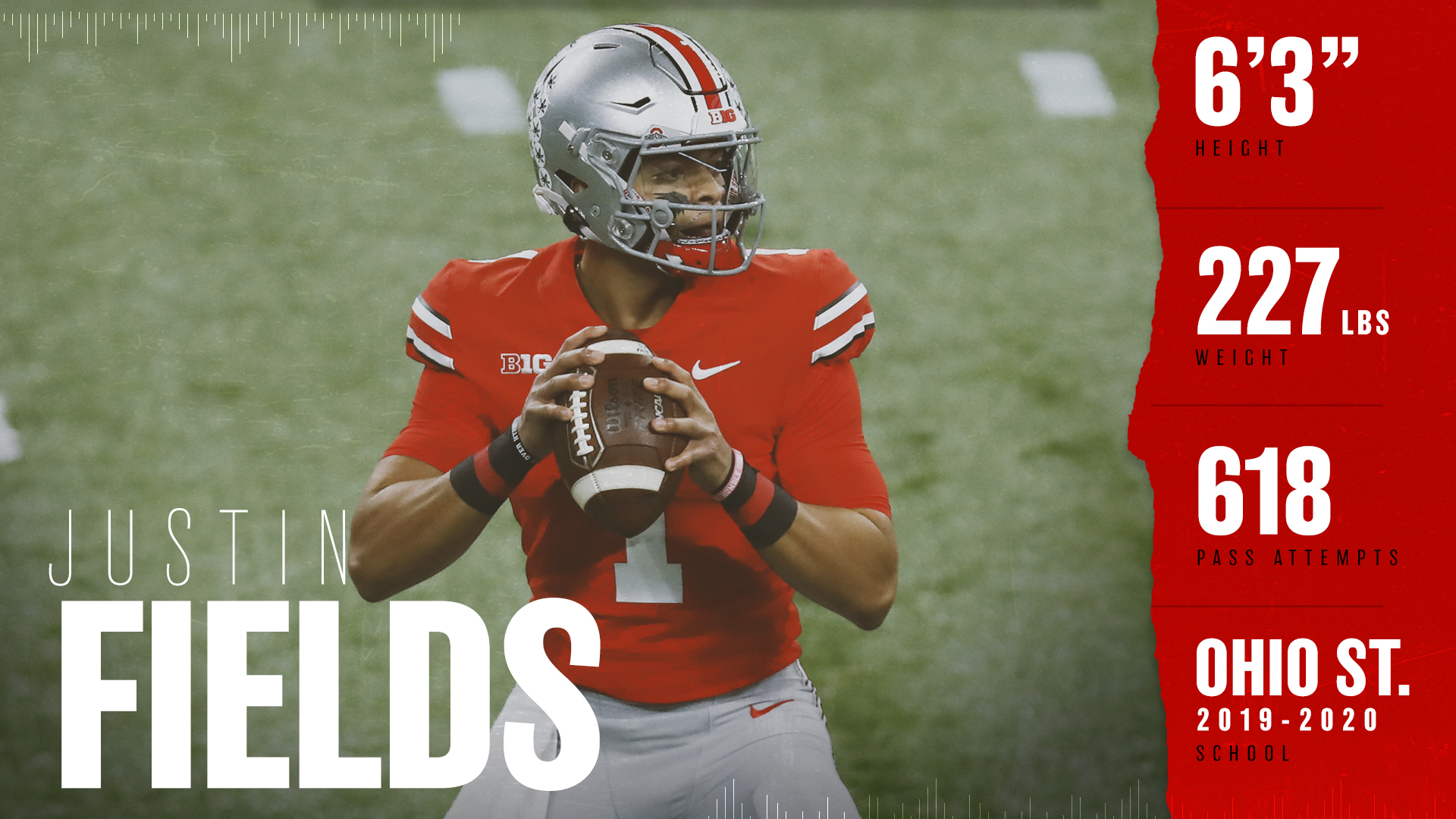
At this point, ranking Fields fourth seems like an insult, but that’s how good this quarterback class is. I still like Fields a lot. He’s an outstanding athlete with an ideal build and good feet. I consider him to be a pocket passer who happens to be mobile. He can make all the NFL throws and you have to love his toughness after playing through extreme pain against Clemson in the 2021 Sugar Bowl. Coaches love this guy — not just Ohio State coaches, but even opposing coaches who recruited him out of high school.
The hesitation for me is the hesitation Fields sometimes shows when looking to pull the trigger. He’s methodical and careful, which isn’t necessarily a bad thing, but the game is going to be much faster at the next level. Fields is a better thrower within the structure of the offense, but not as good improvising as some of the other top quarterbacks. He also struggled against Northwestern in the Big Ten Championship Game, which matters because that was probably the best secondary he faced in 2020, especially in terms of scheme and mixing coverages.
Where I would draft him: Top 15 overall. In a heavily schemed offense that takes advantage of Fields’ athleticism with play-action and boots, he should have a long NFL career. I was guilty of overthinking my evaluation of Justin Herbert last year and I don’t want to do that again, especially because I see similarities.

Mac Jones has been one of the tougher evaluations in this class because there’s no question he lags behind in arm strength and mobility. On the other hand, he is arguably the most accurate quarterback in the group and he throws with impressive anticipation. Also, it’s unfair to say Jones is not mobile, because there are plenty examples on tape of him using his feet to buy enough time and his footwork within the pocket is very good.
Jones can be a very good scheme quarterback. That’s what he was at Alabama. He was in a highly efficient system with very good playmakers and he ran it at a very high level. But the windows will be tighter in the NFL and the RPOs — which Jones ran a lot of at Alabama — will be shorter and quicker. He’s accurate on bubbles, screens and slants, and as long as the windows are open in the middle of the field, his ball placement between the hashes is very good. I imagine there will be an adjustment period as the windows close faster and his receivers aren’t as open in the NFL, but if put in the right position, Jones can be solid starter at the next level.
Where I would draft him: Late first round/early second round. That’s my official grade, but this is really about fit. He can have a very good career with Kyle Shanahan and the 49ers if he goes No. 3 overall, but ultimately I think Lance or Fields can have the same success in that offense with a much higher upside.
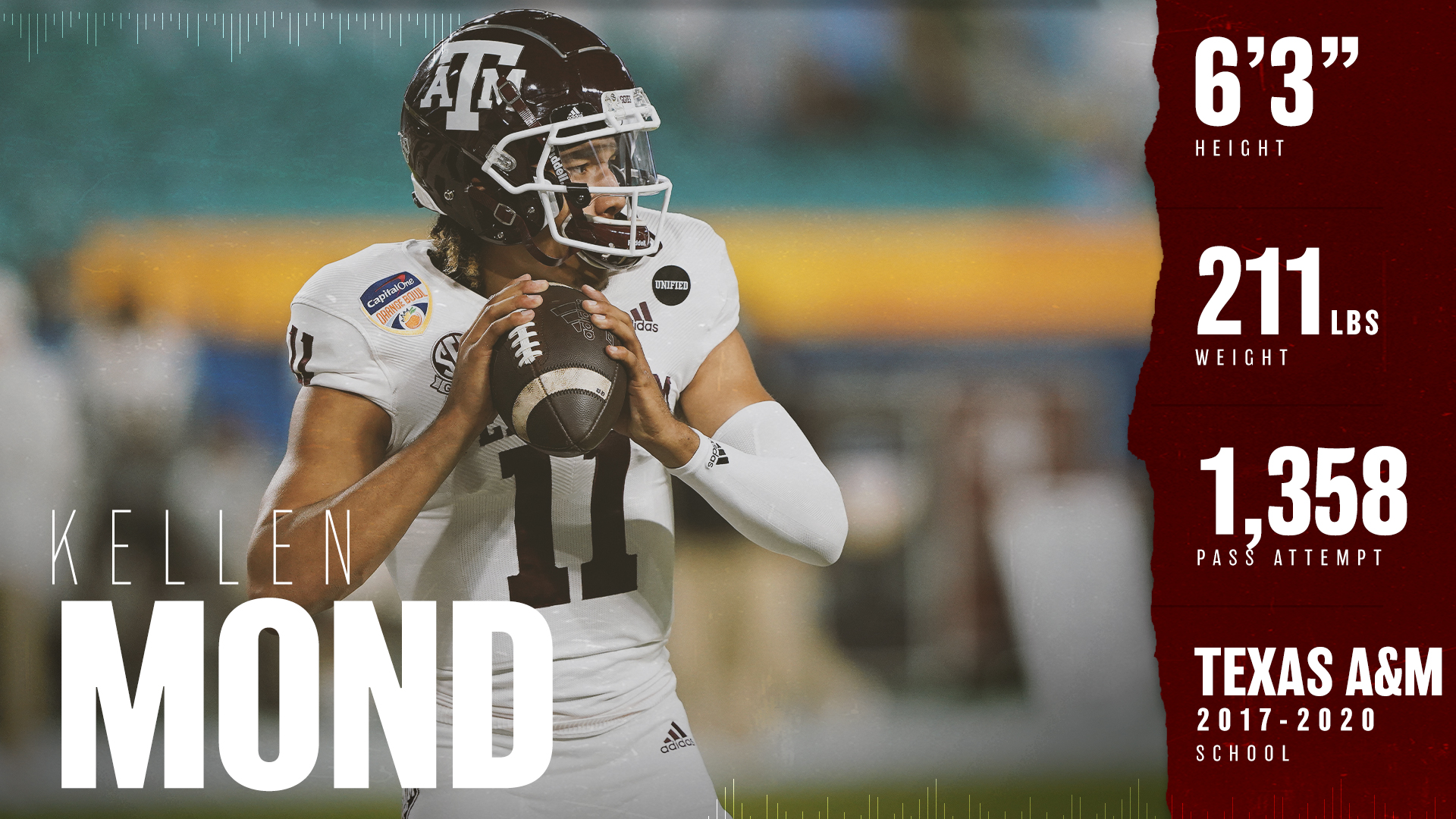
Kellen Mond enters the NFL Draft with the largest football library in his head, having thrown 1,358 passes as a four-year starter at Texas A&M. He has a big arm with easy throws to the field. He uses his eyes to manipulate defensive backs and frequently shows anticipation. I also like that his accuracy improved throughout his career and doesn’t dip when he throws on the run. In fact, Mond’s ball placement on the run is excellent. While Mond’s drop mechanics are a work in progress, he shows good footwork as he works through his reads, including the instincts to climb the pocket or shift left or right to find a throwing window. He’s also a dynamic athlete with the ability to scramble or execute designed runs.
Mond gets knocked for having tight, rigid mechanics, but it’s tough to see how it hurts him, even if it looks a little odd. He still has a quick release. He does have a bad habit of being a tick late on his throws, but the most concerning issue is the large swings in decision-making. He has nearly flawless games and then he has games where he really struggles.
Where I would draft him: Late first round/early second round. Mond and Jones are very closely ranked for me, but if I had to choose between them, I’d have to go with Jones’ consistent decision-making and accuracy. Those are absolute musts for a quarterback and he has them. That said, I still like Mond a lot. His extensive college experience could make him a surprise early starter in 2021. He fits multiple schemes, including spread/RPO and West Coast offenses. Mond’s level of consistency will ultimately determine his viability as a long-term starter, but Dak Prescott and Colin Kaepernick both come to mind when I watch Mond play.
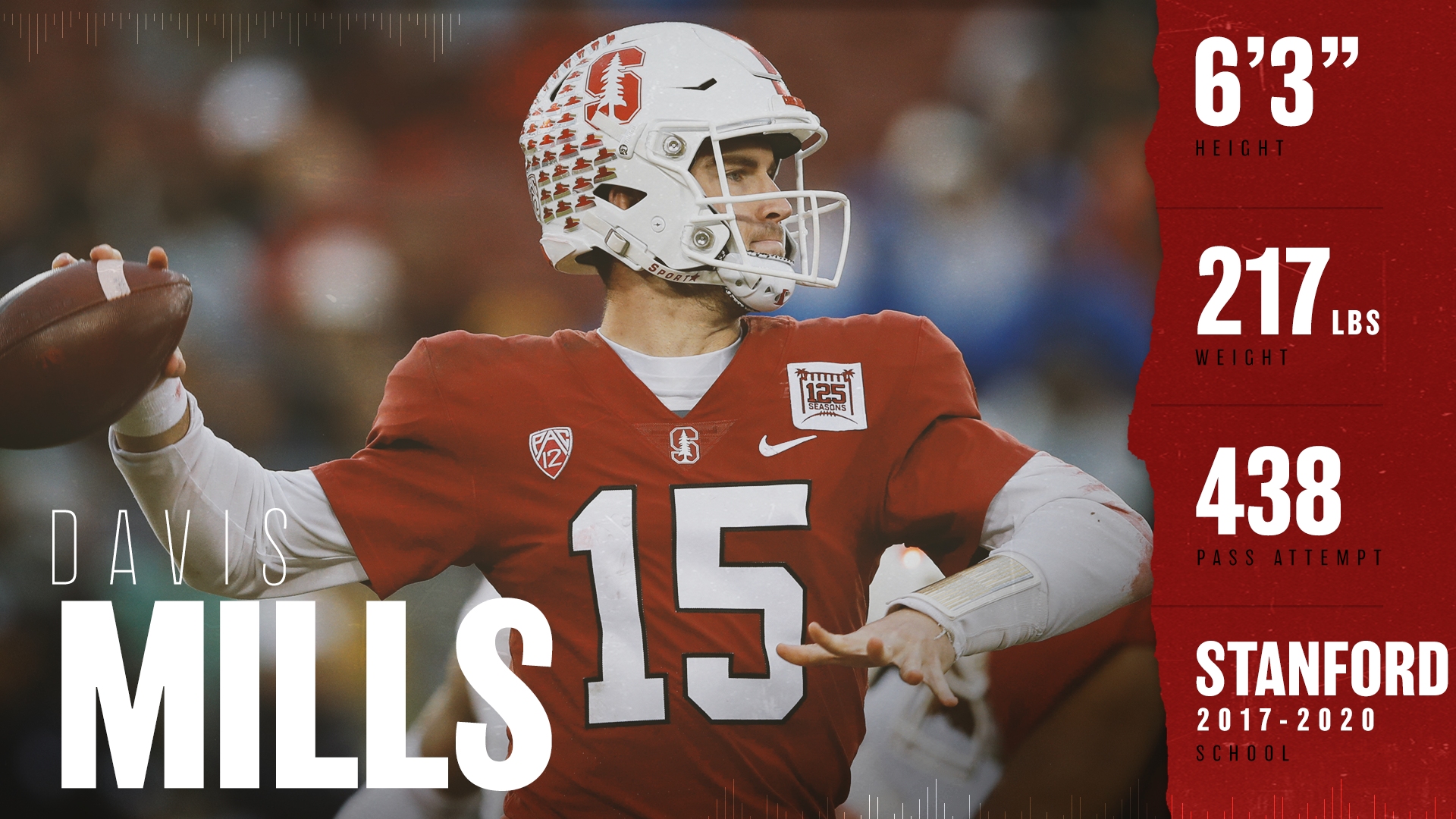
There’s a lot to like about Davis Mills, who can make any throw from the pocket. He’s a quick processor who gets rid of the ball quickly and shows accuracy to all levels of the field. And like Mac Jones, Mills is hardly a statue, even though he gets labeled as such. He had some designed keepers in Stanford’s offense and he shows good footwork within the pocket to elude pressure and reset.
On the downside, Mills only had 11 starts at Stanford and his lack of development at his age (turns 23 in October) is a little concerning. He has too many turnover worthy throws and struggles to read coverages at times.
Where I would draft him: Late second round/early third round. Mills has a solid backup floor with the potential to develop into a solid starter you can win with. He reminds me of Kyle Orton, but with less college experience.
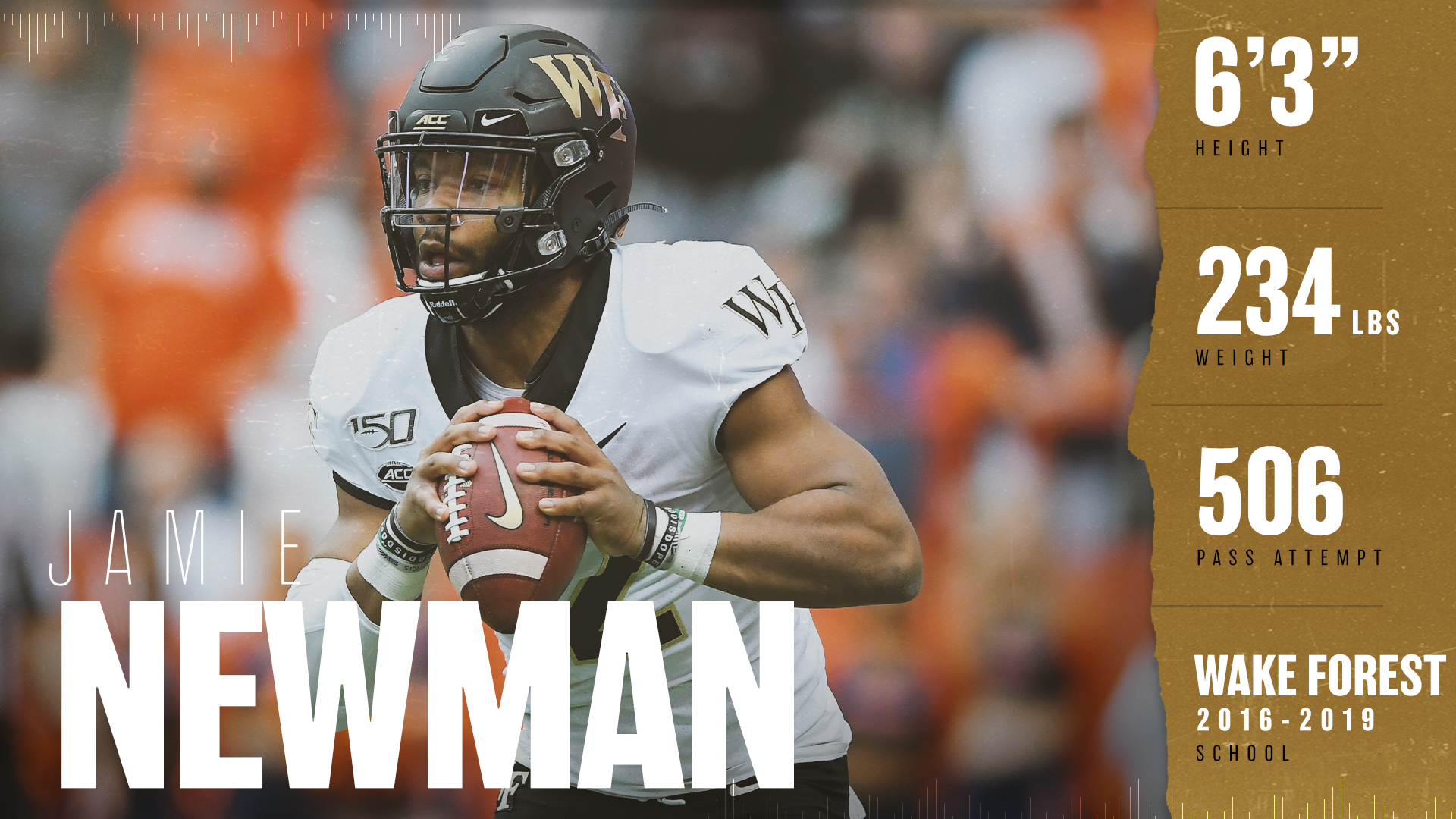
A slightly older prospect at 23, Newman has Sunday arm strength with good deep ball accuracy. He has a solid base and shows patience with good vision. He’s not afraid to take a hit. I like how comfortable he looks in the pocket.
Newman opted out of the 2020 season after transferring to Georgia, but it says a lot that the Bulldogs planned to bring him in as their starter. That said, his throws lack touch at times, especially when he has to shape the ball over a linebacker.
Where I would draft him: Fifth round. Newman is a high-upside developmental pick with the traits to become a starter.
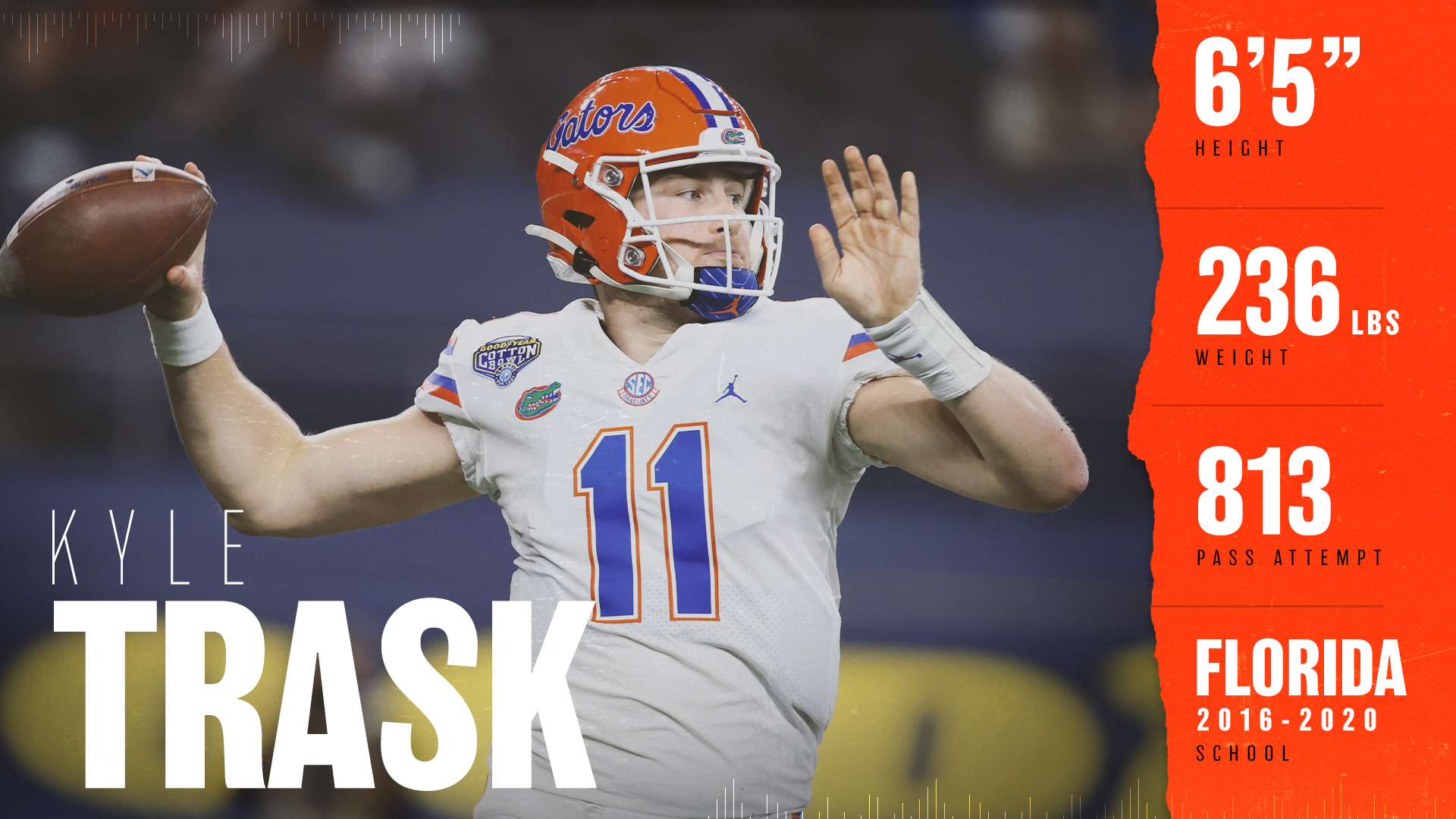
Trask enters the draft coming off an outstanding senior season at Florida. He has great size and shows good touch on his throws. He deserves credit for his loyalty as Trask amazingly spent six years as a backup between high school and college before finally getting his opportunity to start at Florida. The perseverance is impressive and an indication that he’ll stick in the league for a long time, even if it’s just as a backup.
The issue with Trask is that he really needs ideal conditions to have success — which is what he had for most of the 2020 season. He’s limited as an athlete with very little mobility and the arm strength is borderline adequate for the NFL level. He’s simply not a playmaker outside the structure of the offense.
Where I would draft him: Fifth or sixth round. Trask is likely an NFL backup who will be valuable to a team, but unlikely to become a regular starter.
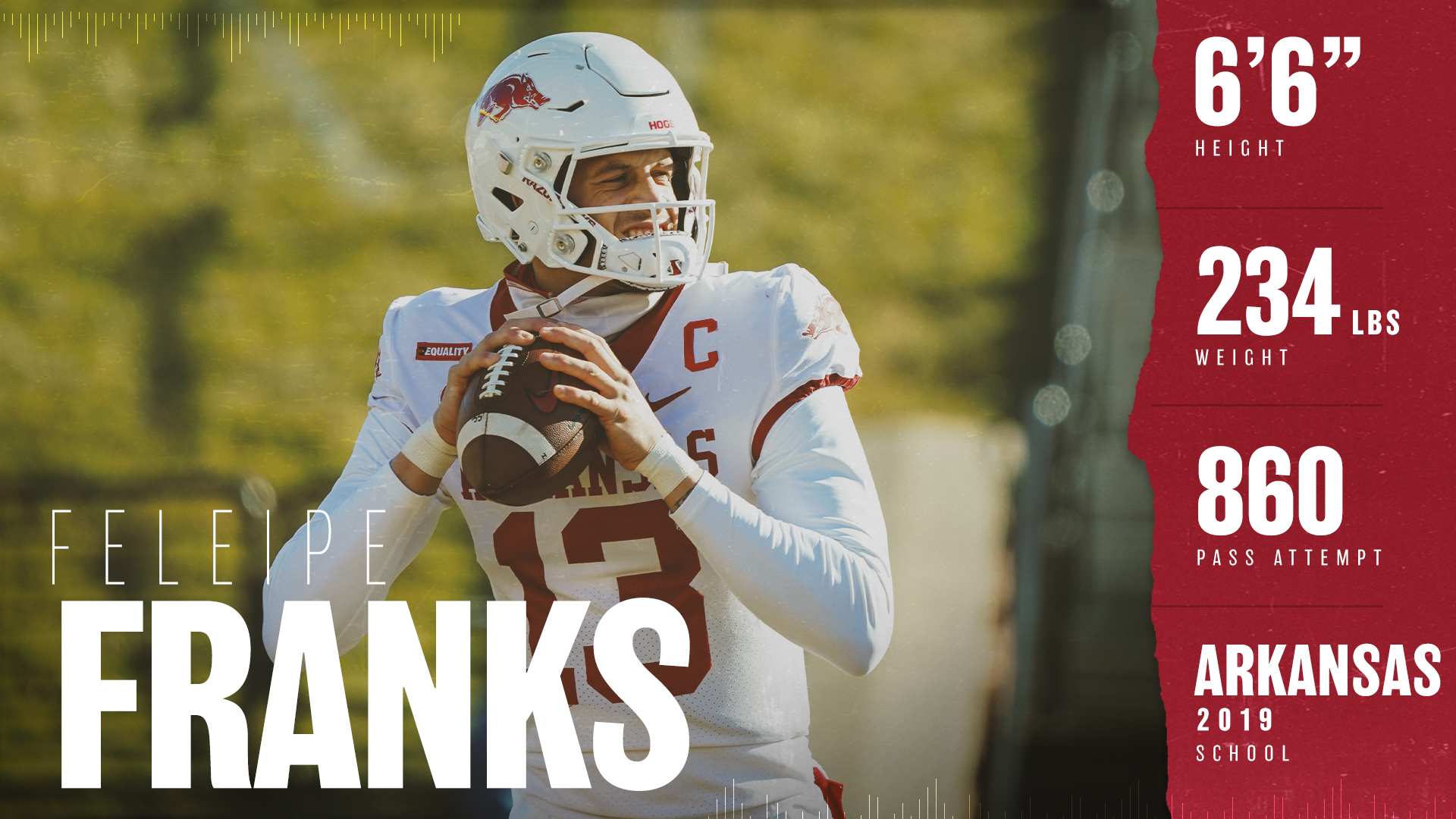
Feleipe Franks was the starter before Kyle Trask at Florida, but a dislocated ankle in Sept. 2019 resulted him losing his starting spot and he transferred to Arkansas. That might have been it for Franks’ NFL hopes if not for a very strong senior season in which he threw for 2,107 yards, 17 touchdowns and just four interceptions in nine games. He’s a big quarterback with good mobility and ability to escape pressure. His footwork at his size is very impressive and there’s something very smooth about his throwing motion. He throws with touch, often uncorking beautiful deep balls.
The issue for Franks is his consistency. While he can elude defenders, he doesn’t throw well off-platform. His reads are sometimes questionable and he doesn’t anticipate a whole lot.
Where I would draft him: Sixth or seventh round. While Notre Dame’s Ian Book might be a safer pick as someone who can stick in an NFL QB room and make an occasional spot start, I like the upside of Franks who still showed improvement in 2020 and might not be maxed out in his development. He has an NFL-worthy toolkit that is worth a late-round selection.

